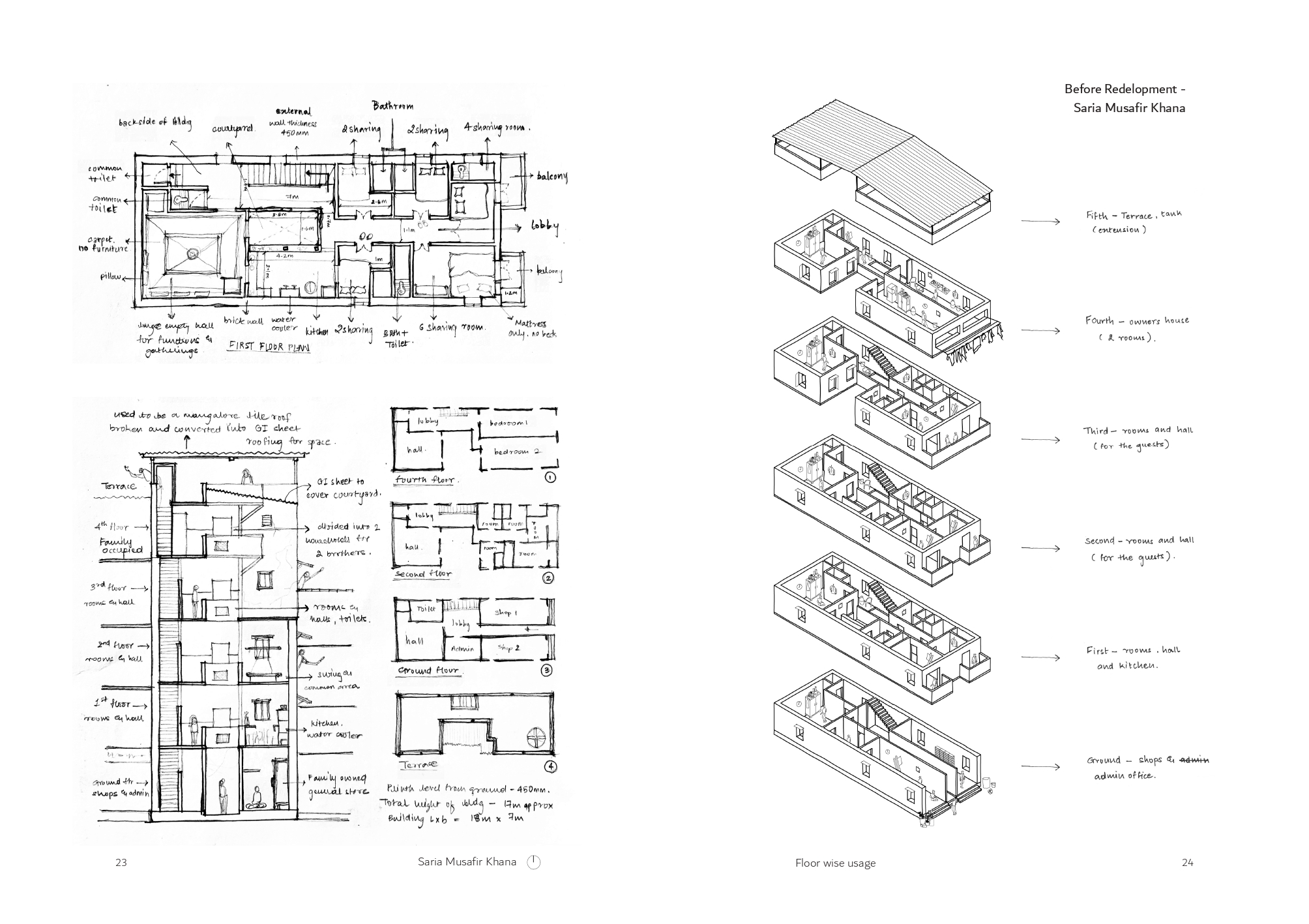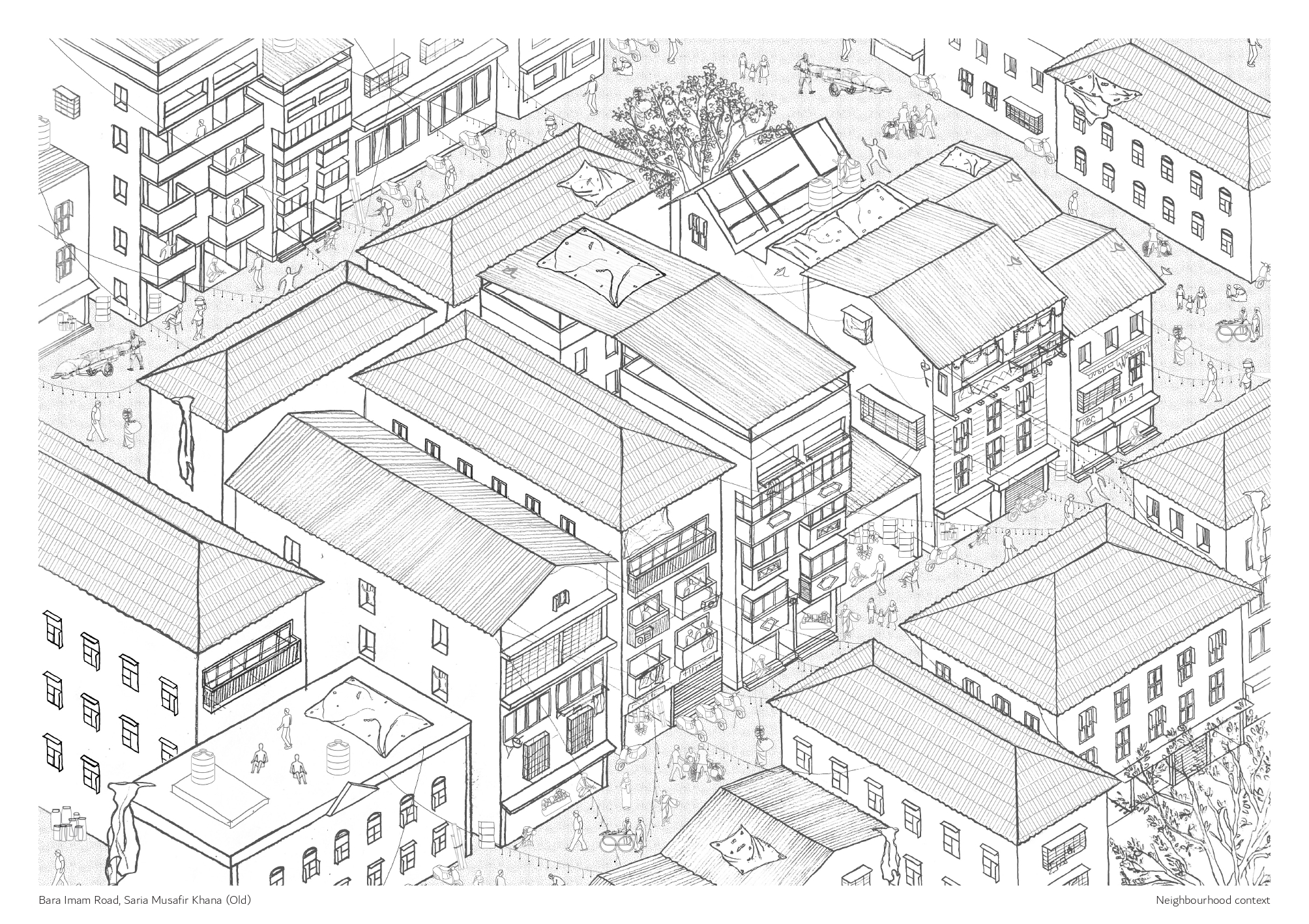Sem 09 / Culture Studies
Drawing Thinking II
Apurva Talpade
The Drawing Thinking course will shift its mode in the coming years. It will be integrated into the course on Research Methods, in a bid to bring thinking through the acts and processes of drawing as a methodological inquiry right at the beginning of research itself. The article here will hold the scope of the course in its expanded form, as it has been conducted in the last two years.
The lectures in the course this last year swept over a large terrain -
- On the mechanics of the image and how it has been harnessed and subverted over time in order to understand how our world gets constructed and shaped through its politics. We spoke through a series of examples both as cultural moments as well as artistic practices and personas.
- A lecture on the impulse of drawing invoking Michael Taussig, Joseph Beuys and John Berger. Framing drawing, among many other things, as a “philosophical, conceptual contemplation.”
- A lecture on the history of orthographic drawing and its consolidation as the primary language in spatial thinking. From perspective machines in the Renaissance to Chinese landscape drawings to the use of cartesian mapping for military endevaours. The writings of Robin Evans, Alessandro Zambelli, and Massimo Scolari were drawn upon.
- A class on the agency of mapping where you read the map not simply as an accumulation of data but as a practice of relations that unfolds new realities and that has its own politics. Here, we began with Borges and Umberto Eco as literary provocations and then discussed the works of Buckminster Fuller, Joaquin Torres Garcia, Louis Bretez’ Map of Paris, among others to ask how the map has dealt with the question of space and representation. Ideas about spatiality in the map are not simply about physical objects and forms but rather about the variety of political, geographical and psychological social processes that flow through space.
- A class on drawing as an ethnographic method, where “thick description” as a qualitative research tool gets expanded to include many kinds of drawings. Here, the practices of Kon Wajiro, Ana Peynas, the group Mass Observation, Nora Wuttke, Dawn Clements, themselves artists, architects, researchers and ethnographers were opened up.
- On drawing narratives, which resists the idea of holding and drawing space as a benign container and looks at how narratives, events, encounters, the muddling details from where complexities and absurdities arise become a means to launch the world and space in the drawing. This was discussed by analysing drawing forms like miniature drawings, Warli drawings like those of Dinesh Barap, Chris Ware’s and Joe Sacco’s work, among others.
- On embodied drawings and how they produce forms of drawing that accumulate marks and movements, time and labour, to hold space temporally and viscerally. The works brought up were those of Neerja Kothari, Jeanette Barnes, Sarah Wigglseworth and Jeremy Till, Jenny Speirs Grant, Wu Guangzhou, etc.
- On drawing as a projective / speculative inquiry into space making in order to think of drawings as architectural representations that are amazingly well poised to act as cultural and spatial agents, especially in the midst of significant change –as a generative realm, not simply a descriptive medium, or a technique motivated position. Important references here were John Hejduk, Ettore Sotsass, Perry Kulper, Archigram and Archizoom, Junya Ishigami, among others.
From here, the students wrote about their own drawing methods. Following are some excerpts from their thesis books which speak about their drawing methods, as well as some examples of how this was harnessed to make an argumentative drawing.
Zahra Bagasrawala
“Thus to document this ever-transforming ecosystem, a methodical approach is chosen, one that involves making meticulous cross-sections, like those of Kowloon City, of this urban phenomenon. Accompanying these sections is extensive note-taking that captures the life stories of the residents, the nature of their habitats, and the shifts they experience. Additionally, network diagrams referring to the works of Mark Lombardi, are created to illustrate the organisational mechanisms at play in each case. This drawing method aims to capture the essence of everyday life and the density of activities that define the neighbourhood. They provide the viewer with intimate glimpses into this compact living with laundry swaying gently from balconies, busy eateries, flooded street markets, and shared commons where routines of daily life unfold. This process highlights Bhendi Bazaar not merely as a singular building but as a continuum - a single, intricate urban fabric that has gradually intensified over the years.”



Sharvin Jangle
“The study is conducted largely through close observations and unstructured interviews. It included long discussions with my neighbours and people of my village, odd derives, and many boat rides with my father. It involved following and mapping routines of actors across caste, class, gender and occupation. Observations that I made growing up help in mapping the shift in the imagination of this landscape, thus aiming to excavate terms that open up the concept of changing spacetimes. The archival documents and oral stories help in opening up the water-based spatial meanings in the language. The landscape of inquiry is a temporal entity, always in a shift, smudgy and wet. It led to the method of taking diary notes. After following the actors for the day at night I did a diary entry of their entire day. Sticking photographs, drawing over them, marking their routines, and small notes. Diary is conceptualised as a way not only to document but to navigate the landscape. Earlier when navigators travelled across seas, they kept a diary. Diary in the context of versova fishing village which is not always looked at through these lenses. The spatiotemporal rhythms could be mapped through calendars, diagrams, and networks overlaying on the spatial documentation. The analysis of inhabitations, practices and routines could be traced through derives, movement charts, and time lapses.”




Anika Pugalia
“The study undertakes a drawing method launching from these collected photographs as spatial anchors(from the photographic album or self taken) and reconstructing the remembered home and current home around it which gets mapped through memories and spatial practices. The photograph itself becomes an act of remembrance. The drawing of the remembered house becomes potent as it influences the new house’s inhabitation.
For the remembered home, the method involved completing the photographs with drawings that bring together fragments of the space -certain objects, routines, and anecdotes that the interlocutor recalls suggesting the nature of memory. The act of remembering can’t hold the house in a single plan or drawing. The house is drawn as not static but as vantages that unfold in many ways.A series of frames get explored where the inhabitation is through the spatial anchors and anecdotes-voice of the interlocutor. The drawing becomes a memory itself.”


